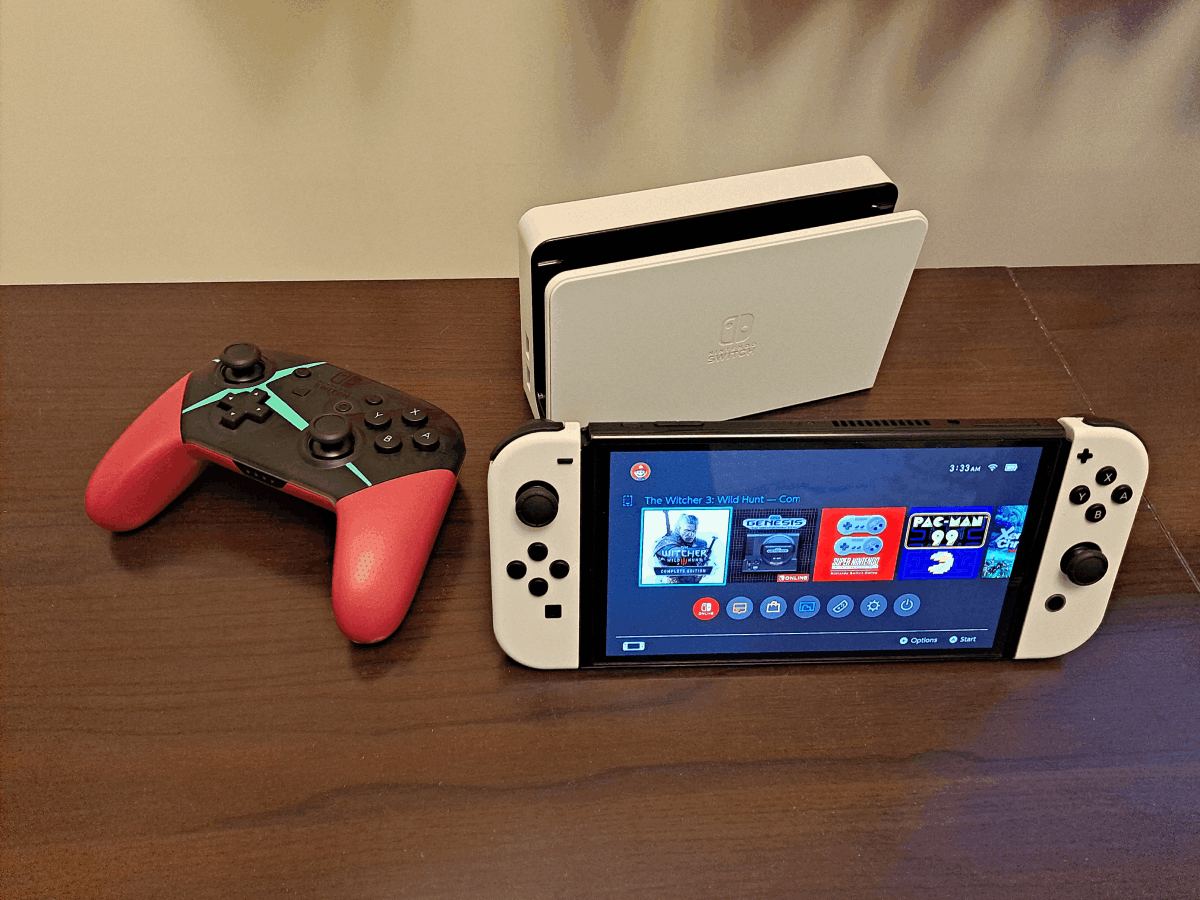Nintendo’s brilliant engineers designed the Switch for 1280 x 720 on a 6.2” screen, or in the case of the OLED model, a 7” screen. With the latter, that’s roughly 200 pixels per inch (PPI), which is very dense and looks super nice. Consider that as a rough rule of thumb, 100-110 pixels per inch are good, and 300 is “retina” as Apple like to describe optimal viewing. With that in mind, you can see why the Switch is best experienced in handheld mode.
Output your Switch to a 65” TV in 1920 x 1080, and your pixel density drops to 32. Yes, 32 pixels per inch. That’s way too low. Graphics appear blown up, fuzzy, flat, and very low poly. You can sit very far away from the screen to mitigate this effect, but that’s not a very amenable solution.
Having said all that, if you mostly game in handheld mode on your Switch OLED but want the occasional larger screen experience, then a good middle ground are smaller monitors. For example, a 25” 1920 x 1080 monitor offers a pixel density per inch of close to 90, which is good. Most people won’t notice the difference compared to a PPI of 100. But 32 is too low.
And all of this is assuming the Switch OLED dock outputs 1080p to your display of choice. In many cases that won’t be true. Run a AAA title like The Witcher 3 or Doom Eternal, and often the docked resolution will drop far below 1080p, reducing your pixel density. Again, we’d like to reiterate this is not a criticism of the Switch, as the console was really meant to be enjoyed on the small portable screen, at least for people who prefer sharp and detailed graphics. If you don’t mind making compromises, then of course there’s nothing wrong with playing Switch on a big screen as-is.
